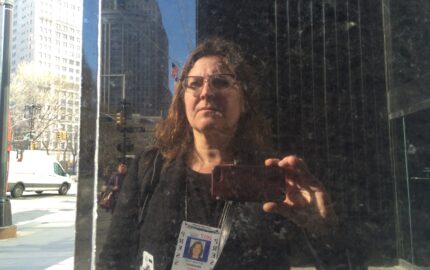As I indulged in my morning obsession of scanning news headlines one day last week, I paused on something called "napkin stories." The tease I got included a reference to actor Chris Pine — a favorite of mine — so I surrendered my click. It led to an Esquire piece about "The Napkin Project (Holiday Edition)." Five writers are asked to write a short story on the spot, on a paper napkin. This year's prompt was to write about a holiday office party.
Silly? Sure. But I could use a little silly as the holidays approach. So much of the news these days is about the entrenched divisions in politics and culture — divisions that have real costs for people around the world. I don't need to drag you down with the details, which are enough to make me ponder eggnog as breakfast fare.
But the napkin project has potential beyond a bit of fun. It's a great reminder of the value of using tight frames for writing practice. They can seem limiting at first, especially for writers who think more words are better words. But the structure of a small space is less intimidating, and demands focus: One scene, one description, one thought. My go-tos in writing workshops have been postcards and thank-you notes. I used to be a fan of nano-narratives on Facebook, but the was in the early days when the platform allowed a limited number of lines.
I'm not sure why I never thought of using napkins, which have long been a favorite writing platform of mine. Workshops, keynotes, my annual Christmas letter, memories to include in eulogies, notes for this weekly newsletter — many can be found on the backs of whatever scrap of paper is near at hand: the back of an envelope, what started as a grocery list, the cocktail napkin I'm using as a coaster for my coffee cup. When I travel, my tiny purse often gets stuffed with those flimsy little cocktail napkins handed out with the undrinkable coffee (or less-drinkable wine) on Delta Airlines; the extensive notes show the blots and bleeds of inevitable mid-air spills. This scattered approach to pre-write thinking became such a habit that Mountain Editor once sent me a "goodie box" as I was preparing for a new semester of teaching and a conference keynote. It was filled with random bits of paper — paper towels, toilet paper, empty envelopes, coffee filters, coffee-cup sleeves, ATM receipts, take-out menus and, of course, plenty of cocktail napkins. He tossed in a couple of Sharpies and a note: "In case you run out of writing tools."
After reading the Esquire piece, I hunted through a kitchen drawer where I keep potholders and everyday paper napkins. Nope. So I went to a hallway cabinet, opened the drawer that holds my seldom-used holiday table linens and found a forgotten stash of paper cocktail napkins. Five-by-five inches with a nice holly-leaf pattern, leaving even less space to for notes. Excellent! You can see it in the photo above, before I plunked a glass of iced coffee on it. That added to the smear of the fat Sharpie I had used for quick thoughts. if you can barely read it, neither can I. But that doesn't matter, because once scribbled — even better, hand-scribbled — those ideas somehow etch their way to your brain and the right ones find their way to your writing.



